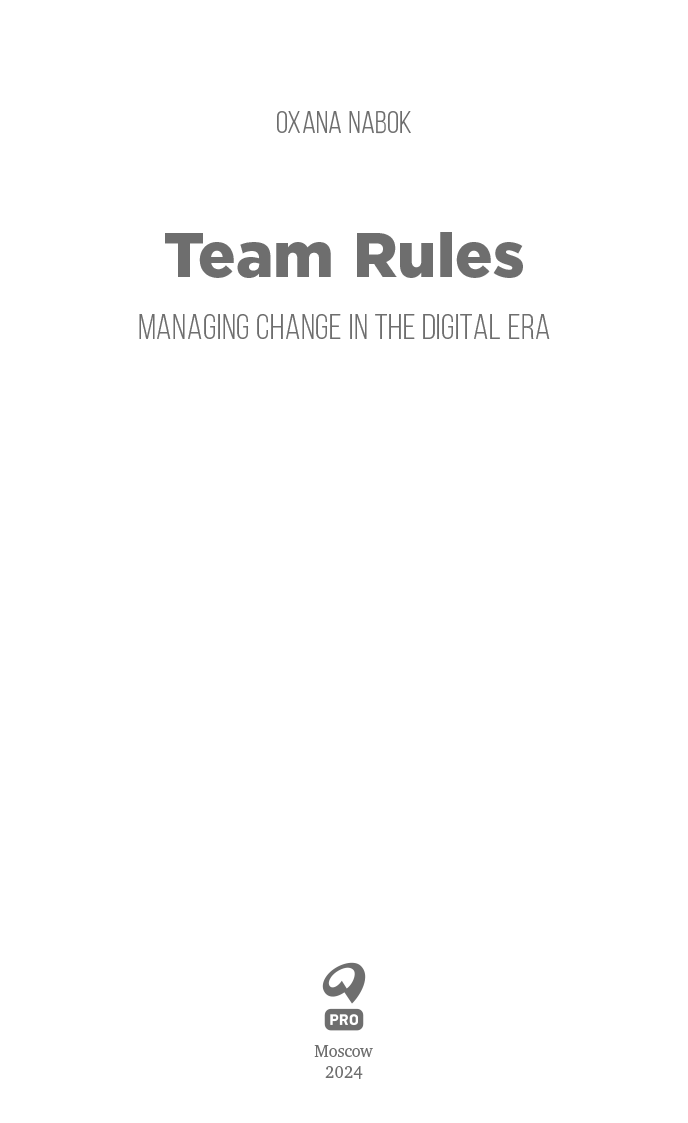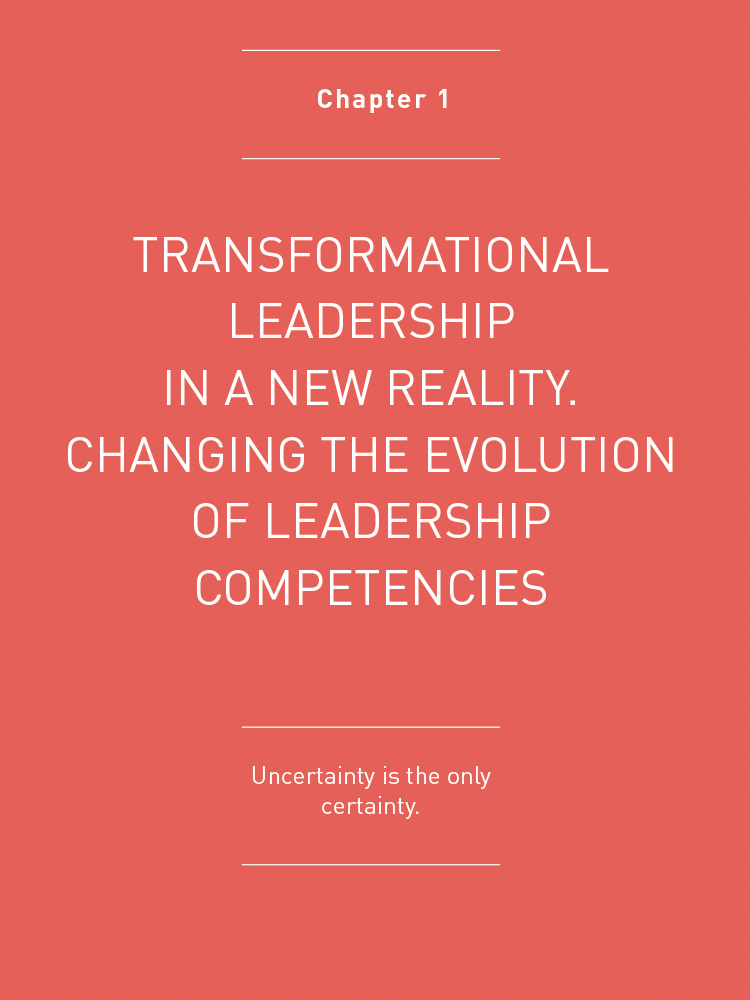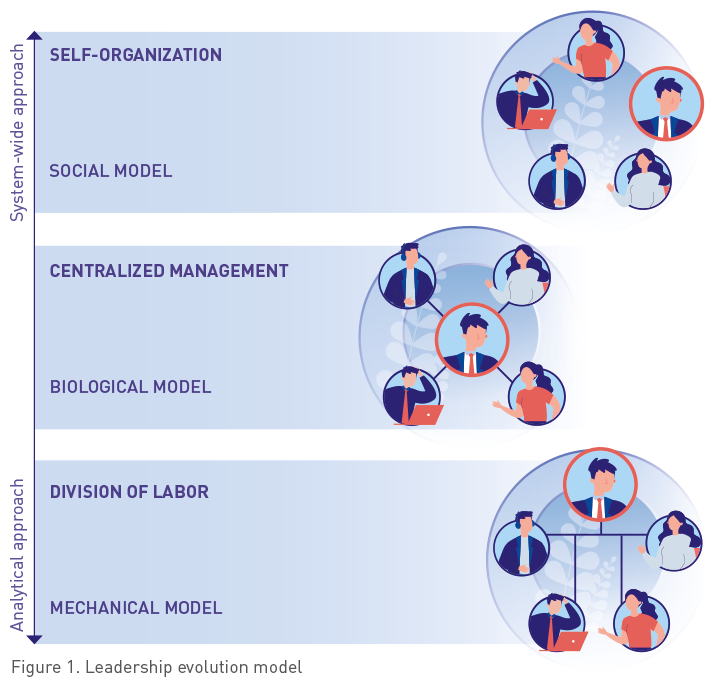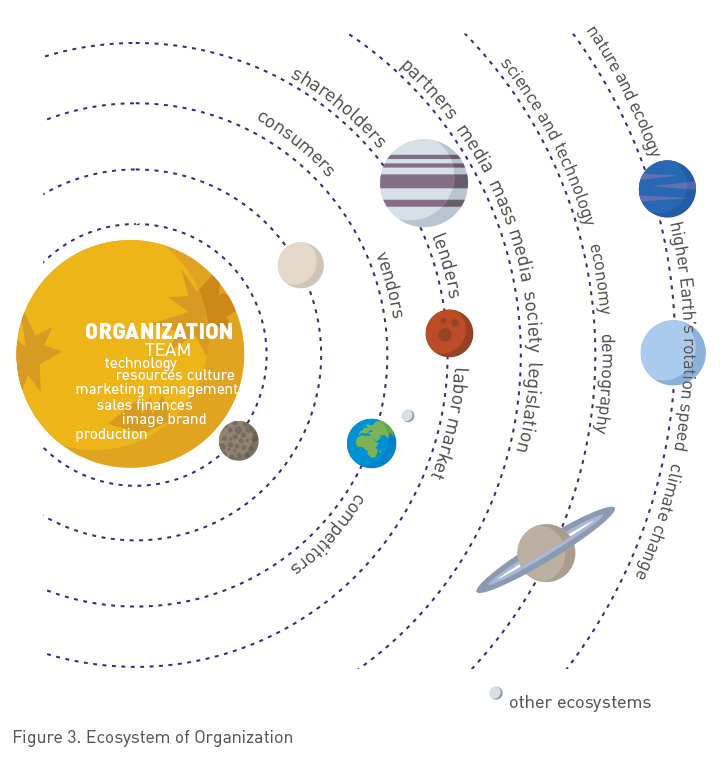
Полная версия
Team Rules: Managing Change in the Digital Era

Oxana Nabok
Team Rules: Managing Change in the Digital Era
Translated and edited by Alpina PRO in cooperation with Frankie Edwards
Design by Tatevik Sarkisyan
© 2023 by O. Nabok
© 2023 by Alpina PRO LLC
© Electronic edition. Alpina Digital LLC, 2024
* * *
All rights reserved. The scanning, uploading, and distribution of this book without permission is a theft of the author's intellectual property. If you would like permission to use material from the book (other than for review purposes), please contact mylib@alpina.ru.
INTRODUCTION
Would you like to become the best version of yourself in management and master the techniques of creating a team capable of acting as a balanced unit, complementing each other, and approaching changes and innovations with a positive mindset and enthusiasm? Do you desire a team that takes responsibility for the organization's development, refines existing processes, and maintains a strong focus on results? If so, “Team Rules: Managing Change in the Digital Era” is exactly what you need. The book explores a modern leadership model and 10 change management strategies that have proven successful in today’s digital world. By leveraging these strategies, you can build a team of like-minded individuals capable of:
• Efficiently organizing and autonomously improving processes;
• Anticipating and promptly addressing client expectations with suitable changes;
• Enhancing their performance through digital tools, by unlocking their inner potential and scaling up best practices;
• Striving for maximum results, while avoiding bureaucratic processes and toxic reactions;
• Investing personal resources such as effort, time and energy to achieve a shared result.
An important aspect highlighted in this book is the provision of practical tools for engaging employees in the implementation of necessary changes by fostering a corporate culture of innovation and creating an environment that not only encourages self-learning and the development of new competencies but also drives team members to improve the organization's performance and adapt to a dynamic (or turbulent) environment by generating new solutions.
You have in your possession a comprehensive desktop toolkit for a successful leader in the digital era, complete with abstracts from expert articles, research papers, and real-life stories. Each chapter contains genuine cases supported by analysis and insight from experts, equipping you with 80 % practical and 20 % theoretical knowledge that is essential for achieving a systemic level of expertise in change management, as well as organizational, team, and personal development.
This book will undoubtedly prove valuable to experienced leaders who want to hone their leadership skills in an era of constant change, as well as to those who have recently embarked on their career journey. It will also be of interest to middle managers, heads of business units, and HR managers seeking to nourish their management skills or transition into the role of business partners.
01. STRATEGIC DIGITAL MANAGEMENT
Chapter 1. Transformational leadership in a new reality. Changing the evolution of leadership competencies

Welcome to the world of rapid change! The concept of “stability” is no longer applicable to organizational management. Instead, the key priorities of transformational leadership involve the ongoing quest for growth opportunities to unleash the organization's potential, boost team productivity, and ensure the sustainability of services while implementing new processes and systems.
The success of modern organizations hinges on several key factors, including operational change management, innovative strategies, a corporate culture that embraces innovation and digital performance boosters, as well as the transformation of models and processes through team engagement. Notably, client-centric systems that address the requirements of both external clients (consumers) and internal ones (employees, partners, and all stakeholders of the organization) take center stage.
“
SERGEY CHUMAK, International Expert on Business Transformation and Strategy, Head of the Strategy Committee of the Digital Experts Association (DEA):
– Digital transformation is undoubtedly rooted in technology, but its primary focus is always on the client: creating value for the client involves a creative experiment that inherently carries an innovation risk. An update to organizational design is imperative, as it serves to stimulate creativity.
One of the most significant challenges encountered in the process of digital transformation is cultural transformation. The question that continues to puzzle many is how to motivate managers to be creative, responsible, and successful entrepreneurs within this context.
”
What about management?
Today, volatility, dynamism, and frequently the absence of clear benchmarks have become the new norm. While it may be described as harsh, it has acted as a catalyst for the next phase of evolution in management models.
Once upon a time, we transitioned from a division of labor to centralized management with a strict hierarchy. Nowadays, we are moving towards an innovative culture within organizations that have shorter structures and a minimal number of management layers where everyone has the potential to assume a leadership role, particularly within specific tasks and projects and where motivation is not only about dangling a carrot in front of employees but also ambitious goals, sustainable collaboration and smart competition (see Figure 1).

At the forefront is a focus on seeking common interests of clients, employees, partners, and all stakeholders to create a sustainable organizational ecosystem and unleash its potential through the integration of digital tools, thereby improving interaction efficiency. Even the most flawless strategy will fail if it lacks the support of the team. In this case, the dynamic and simultaneous introduction of innovations is replaced by a more rigid adherence to guidelines.
The team, much like a living organism, will either adapt to changes (ideally initiating them) or reject them as unnecessary while maintaining the existing status quo and a consensus that is currently favorable. The trend of involving employees, clients and partners in the development and enhancement of a strategy becomes a natural norm and paves the way for its successful implementation.
NEW ERA SIGNIFIES NEW CHALLENGES
The paradigm of important leadership qualities is continually evolving and broadening. Today, the key is the skill of successfully implementing changes and modeling the future together with the team, thereby giving rise to the emergence of transformational or resonant leadership.
What is a transformational or resonant leader? It is an individual who knows how to inspire employees, helping them to make informed choices, and guiding their development based on values and narratives that are important for the team and the organization. He or she leads by example, actively pursues positive change, fosters an environment conducive to the generation of ideas, is open to experimentation, and acknowledges his or her mistakes when they occur. At the same time, transformational leadership does not negate the ability to manage based on strategic priorities and high-quality real-time data, nor the capacity to swiftly adapt the organization's ecosystem as needed.
A dreamer and an analyst, a financier and a visionary who anticipates trends, a competent manager and a mentor – mastering all these roles is not something that can be accomplished overnight.
This is where the strength of leadership evolution becomes evident (see Figure 2), transforming into:
• multi-level, which in this context signifies a phased evolution through several levels or growth points each of which is characterized by the development of new competencies, behavioral role models, and managerial capabilities; present at all levels of the organizational structure;
• team-based, here we are talking about collaborative efforts, the avoidance of centralizing power in the hands of one individual, and sharing areas of responsibility and tasks. This approach considers strengths over statuses or positions and is supported by cross-functional and project teams.
This realization underscores that potential exists within everyone. The question is how to unleash it. What skills should be developed to become a manager who does not merely issue instructions but instead leads toward collaborative and sustainable development, helping to overcome challenges?

TRAITS OF A SUCCESSFUL LEADER IN AN ERA OF CHANGE
1. Ecosystem ThinkingThis skill means having social sensitivity and the ability to manage relationships at different levels, including within large systems.
A company is a living organism, an ecosystem, where each element (employees, partners, customers, contractors, society, state) exerts an influence on the direction and performance of the system as a whole (see Figure 3).

To gain insight into not just individual shortcomings but the whole picture, one must be an observer with the capacity to take a broader perspective, thinking proactively, and understanding how a combination of different factors shapes the ultimate outcome.
When developing products, adopting the ecosystem approach serves as a significant gravitational force in the market which not only changes the trajectories of competitors, but also compels them to reevaluate their strategies.
Here are some notable examples of ecosystems. Sberbank and Yandex are collaborating to provide a wider range of services within a unified environment – an ecosystem. This marks a significant technological breakthrough[1].
The CEO of Kaspi Bank has also started to create an ecosystem. In their ecosystem, customers can manage finances, make online purchases, compare prices for specific items, participate in loyalty programs, among other options. The primary focus of the company is on enhancing the customer experience with the product, which is reflected in their technology-driven approach: they have interviewed 30,000 consumers, to gather their feedback and needs, and then proceeded to create a product that caters to these needs. All the services are interconnected, complementing each other, and designed around the interests of both customers and partners in the ecosystem. If one evolves, the other follows suit[2].
The Mail.ru Group ecosystem consists of a wide range of offerings, including payment services, a unified identification system (single ID), offline digitization programs, media services, and game libraries. All of these products together form a unified infrastructure where users can access an array of services and find virtually anything they might need[3].
2. Stage of Charge (Energy Potential)The concept of “vitality quotient” is often associated with activeness but there is a distinct different between the two: activeness refers to external dynamics, while VQ represents an internal resource that stimulates these external dynamics.
The state of charge (the intensity of the desire to live) serves as a vital asset for leaders as it empowers them to overcome resistance, provides the strength to inspire and engage others, and kindles people's hearts with ideas and goals. It often goes hand in hand with charisma, which has no clear or uniform definition but includes the charm, self-confidence, and the persuasive power that naturally emanates from energetically charged leaders.
The leaders who are best remembered are not the ones who never made mistakes but those who actively and stubbornly pursued their goals. Such leaders share their passion and love for the organization's mission with their team, through sincere values, acting as role models, and implementing processes that embody and support the organization's DNA.
I remember very well my onboarding as HR Director for Russia and the CIS in a corporation that was engaged in a global restaurant and other service businesses around the world. As per their onboarding plan, I rose through the ranks from a restaurant worker to a manager of several divisions in different cities in one month.
My scope included studying the operational business, getting to know the team, auditing HR processes, and formulating an HR strategy. Usually, newcomers meet and communicate with colleagues in office meeting rooms. The uniqueness of the onboarding approach proposed to me was to work on actual restaurant sites. This hands-on approach helped me to learn the minutiae of the restaurant business, establish bonds with the team, identify all the growth points to implement the HR management policy, and develop an understanding of the organization's DNA.
The company placed a strong emphasis on maintaining a high level of development energy and continuously improving processes: an innovation forum, the exchange of best practices, and the pursuit of new types of services all contributed to this commitment to improvement.
This 'state of charge' produces very good results when combined with the ability to inspire, motivate, and create a culture of innovation – alongside tools to maintain team engagement and drive, and the capability to sustain and revitalize the resourceful state of both oneself and the team.
3. Focus on a culture of shared values and a sustainable corporate environmentMembers of teams and participants in cross-functional projects not only can, but must differ in age, experience, skills, and talents. When they collaborate, they serve to complement each other through their diverse competencies and foster an exchange of energy, which, like static electricity, tends to accumulate and electrify the internal potential of the organization, thereby enhancing its performance. This embodies the essence of teamwork. Our collective strength leads to the creation of new value.
A constructive attitude and a desire to reach an agreement enable employees to search for common ground, find compromises, and establish common goals. Gradually, team members align their perspectives and improve the organization's operations. This process fosters the development of a culture of shared values, which not only enhances and accelerates the organization's potential but also extends beyond team morale, promoting a culture of innovation.
The leader’s role is to create the conditions and provide a background for such collaboration. This entails defining tasks with clarity and precision, accompanied by transparent monitoring. The leader should ensure that each participant in the process understands their role and the cause-and-effect relationship of their actions. It is essential to establish direct lines of communication with every level of the organization, providing a platform for everyone to voice their concerns and ideas. The leader should also create a database of knowledge, best practices, and available resources while optimizing processes and eliminating factors that drain the time and energy that are required for productive work.
The mission, discourses, and shared values play an important role. Genuine ambassadors for the company are those employees who not only understand but also identify with the company's values. A person is more inclined to perform tasks that align with their core life principles and interests (the ones that are genuinely held, not just those that are only documented on paper).
Apart from external marketing targeting clients, there's also an internal aspect focused on the team – internal communications. The mission, goals, and values integrated into the processes make up the framework of the organization. The organizational culture, along with its various elements, sets the tone for both offline and online environments within the organization, and this is further reinforced by the support of its leaders.
When I work with teams to formulate or revise their missions and values, every single time we start by posing two fundamental questions “Why are we doing this?” and “How will the organization benefit from it?”
Any mission, without a deep understanding of its semantic meaning, remains nothing more than an attractive slogan. Team members truly feel the power of words when they believe in the sincerity and value of the mission's objectives.
Projects created solely to “fill a website” lack genuine benefits. However, when a shared discourse permeates the corporate environment, it is reflected in the processes and all types of interaction among team members and with clients.
4. Emotional IntellectToday, it is difficult for a leader to be effective without strong emotional intelligence, which implies empathy (being sensitive to other people's feelings), awareness, and emotional control (both for oneself and in managing others' emotions).
Loud emotional disputes, toxic relationships, the inability to give constructive feedback and withdraw from conflictual situations, as well as sub-optimal processes and lengthy meetings with many participants sap the strength of a team. An environment filled with negativity diverts employees' focus from their tasks, effectively disarming them. By contrast, fostering constructive communication, attention, and sensitivity to the interests of various parties involved, combined with clear tasks, their value to the employee, and a healthy working atmosphere give rise to loyalty, motivation and boost productivity.
Positive emotions uplift your mood and influence your perspective on situations: problems are perceived as fresh challenges for which optimal solutions must be found. In other words, the focus of employees shifts from assigning blame to seeking resolutions. Why waste valuable time on anything else?
Emotional intelligence can manage moods for the benefit of all stakeholders, which is especially important in the era of ecosystems. This is not about manipulation, or being someone else's caretaker, but rather, it is about fostering healthy relationships and taking into account the repercussions of decisions on various stakeholders, all while avoiding extremes.
When working with managers with different styles, I see a direct connection between the thought patterns of leaders and the corporate culture.
The more they are open to new perspectives, eager to understand the state of affairs, and listen to their team members, the more the environment is receptive to innovation, the clearer the processes, the better the results, and the more effective the interactions.
Such leaders manage relationships primarily “with themselves,” engage in comprehensive self-development, adopt a broader perspective, view situations as observers, and are not afraid to employ self-irony when trying new approaches. This ensures enduring relationships within the team.
One gains significant insights by simply observing and analyzing the staff turnover within an organization.
5. Lifelong Learning and Coaching Elements in Team RelationshipsThe principle of “one degree for life,” which worked perfectly in the 20th century, is no longer relevant. In order to adapt to the ever-evolving challenges presented by the external environment, you need to continuously learn throughout your life. This ideology is known as lifelong learning[4].
It is essential to develop not only hard skills, which are the skills required to perform professional tasks, such as language proficiency for a linguist or coding for an IT specialist, but also flexible, universal skills, often referred to as soft skills, such as the capacity to work in a team, plan and set goals, adapt to new conditions, as well as the so-called meta-skills, such as creativity, authenticity, and self-awareness.
This is a continuous process characterized by each employee delving into their own self, seeking personal purpose, breaking down the barriers that restrict beliefs, and strengthening the collective potential of the entire team. Henceforth, every new challenge becomes an opportunity to tap into a resource.
Let us add the following to the above:
• abandoning the “I know everything” mindset: the willingness to learn from the experience and knowledge of any employee, regardless of their status;
• rejecting established patterns in favor of perceiving with open eyes, where unconventional approaches are not automatically deemed incorrect;
• willingness to admit mistakes and work together to rectify them.
This is how attentive and versatile leaders emerge and qualify as mentors.
6. Change Management and innovation implementationAn effective leader is an entrepreneur who evaluates each task in terms of the future outcome. Moreover, it is important for him or her to not only think proactively but also to perceive changes as a permanent growth factor.
The team will actively engage if the leader maintains a culture of innovation that aligns with the core principles of the organization and the people within it if the leader is open to experiments and improvements and actively facilitates their implementation. The key concepts here are speed and productivity. The leader must always keep abreast and assist in the swift implementation of changes in processes and operating models. To achieve this, the leader should receive dynamic updates to understand the overall situation and make well-informed decisions in the moment. This involves having readily available dynamic metrics (key performance indicators or KPIs) that accurately reflect current circumstances, as well as scenario testing methods. We will discuss these in later chapters.
The main point to bear in mind is that when we make changes to processes, there is an additional burden on the team in terms of applying and mastering new technologies. It is important to undergo transformation while simultaneously increasing overall productivity.
The leader's responsibility is to help the team in streamlining their efforts, building a meaningful path, choosing priority areas and introducing digital tools that will give the organization the greatest immediate impact.
7. Digital skills & the ability to work with dataIn addition to an open-minded approach, innovation also requires new digital competencies (project management through a CRM[5], proficiency in handling clouds and understanding intelligent systems, and so on). This is where the ability to seamlessly integrate the organization’s ecosystem into a digital environment and flexibly manage processes using high-precision algorithms become paramount. It involves optimizing time-consuming operations and strategic planning. Tools aid in the creation of digital twins, testing scenarios, prioritization, and real-time management based on reliable analytics.
“
SERGEY CHUMAK, International Expert on Business Transformation and Strategy, Head of the Strategy Committee of DEA:
– Until recently, many believed that “digital” was something on the distant horizon, beyond our reach. Today we recognize that every business must embrace this trend and address the question “How can I turn new technologies into a tool for creating value for customers and shareholders?” To embark on a journey of digital transformation, it is advisable to create a manageable plan for quick wins and supplement your own competencies by collaborating with more experienced partners.
”
Welcome to the world of digital management, where the pioneers are those who embrace the new, exhibit organizational flexibility, have a commitment to ongoing development alongside the team, and display a keen awareness of processes, team dynamics, and innovations.
Chapter 2. Thinking innovatively, tapping into hidden resources, and scaling from within



